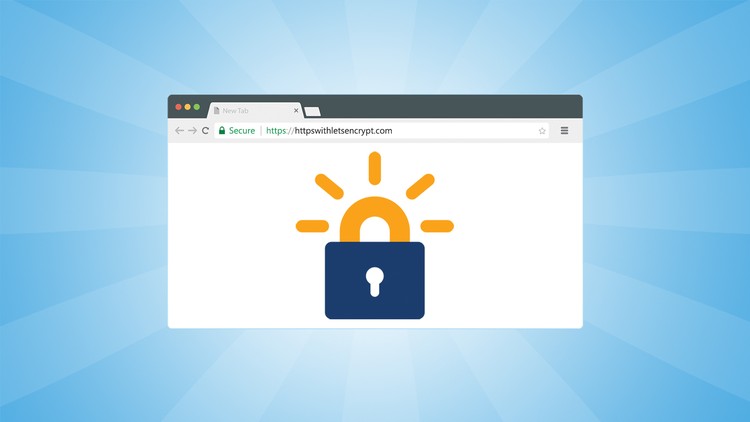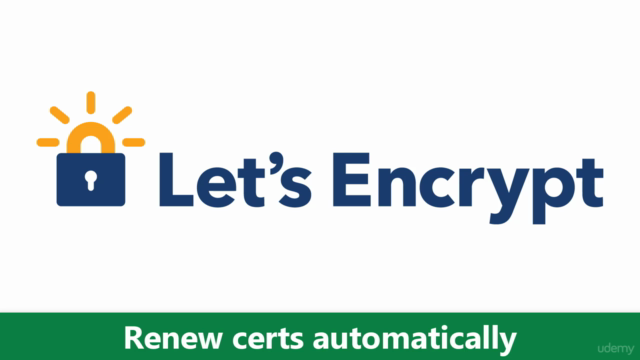Free Automated A+ Graded SSL Certificates with Let's Encrypt

Why take this course?
¡Claro! The process you're describing involves using a web server like nginx or Apache as a reverse proxy to serve your web application. This setup allows you to leverage the web server's ability to handle SSL/TLS (Secure Sockets Layer/Transport Layer Security) connections and encryption, offloading that task from your web application itself.
Here's a simplified breakdown of how it works:
-
SSL/TLS Termination: The web server (nginx or Apache) is configured to terminate the SSL/TLS connection. This means it handles the encrypted communication with the client, decrypts the request, and then passes along the plaintext HTTP request to your application server (like Rails, Express, Flask, Django, etc.).
-
Reverse Proxy: The web server acts as a reverse proxy by forwarding requests from clients to your application servers. This is typically done using the
proxy_passdirective in nginx or theProxyPassandProxyPassReversedirectives in Apache. -
Load Distribution: If you have multiple application servers, you can configure your web server to balance the load across them. This ensures no single server bears the full brunt of traffic, improving both performance and reliability.
-
Virtual Hosts: You can set up different domains or subdomains with their respective SSL certificates using virtual hosts within the same server setup. This is particularly useful when hosting multiple websites or applications.
-
Automation: With Let's Encrypt, you can automate the process of obtaining and renewing SSL certificates for your domains, which saves time and reduces the risk of security lapses due to expired certificates.
The support you can expect from a course like this typically includes:
- Clear and detailed explanations of concepts and configurations.
- Step-by-step guides and examples that are applicable to real-world scenarios.
- Personal responses to questions related to the course content.
- Access to updated materials as best practices evolve or new features are introduced.
By taking this course, you're not only learning how to set up a secure web server with SSL/TLS, but you're also gaining insights into best practices for hosting and scaling your applications effectively. This knowledge can be incredibly valuable for maintaining a professional online presence, ensuring the security of your user's data, and providing a seamless experience for your users.
Course Gallery




Loading charts...